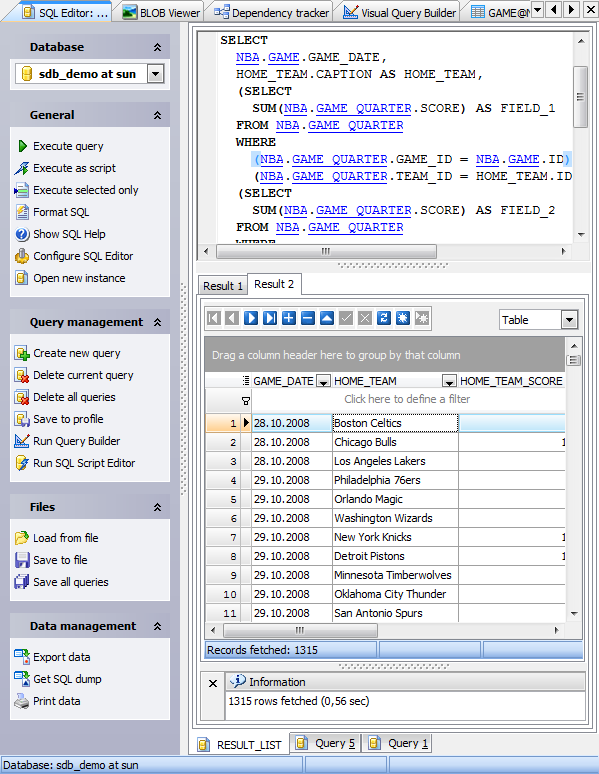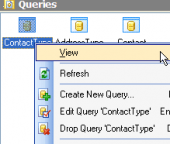Subscribe to our news:

 Partners
 Testimonials
Johnattan Badden, Manager: "The software is easy to work with and most importantly, report management is extremely easy, even for a novice like me! I am able to create and edit my databases with a few clicks and easily maintain them afterwards. I highly recommend SQLite Maestro to educational institutions: it's easy and flexible, it is exactly what can be good for using in schools and colleges".
Mark Worsnop: "By the way I wanted to say thank you for a good software package. It's a pleasure to work with Maestro as it "just works" and makes my job that much easier".
More
Add your opinion
 Customers
|
SQLite Maestro online Help
Executing query
SQL Editor provides you with several variants of the query executing.
| • | To execute all statements of the text area with result data, click the Execute query item of the Navigation bar or use F5, F8, or F9 shortcuts. Statements of each tab of SQL Editor are executed together in a separate thread in order to continue your work with the software while the query is executing. |
| • | You can also execute query as script (Shift+F5, Shift+F8, Shift+F9). In this case the query does not return data. |
| • | To execute only a selected part of the query text, use Execute selected only or the Alt+F5, Alt+F8, Alt+F9 shortcuts. |
| • | There is also a possibility to execute a statement at the cursor position. For this purpose, use the Execute at cursor link at the Navigation bar or use the Ctrl+F5, Ctrl+F8, or Ctrl+F9 shortcuts. |
If the query text is correct, the query is executed, and if the query statement is supposed to return data (e.g. SELECT statement), the Result tab opens with the data returned by the query. If an error occurs while executing the query, execution stop is stopped and the appropriate error message is displayed in the Information tab.
The Result area displays the result data in grid. All principles of working with data you can find in Data Management section.

|
 Company news 
May 5, 2021
New version introduces new database encryption algorithms, support for generated columns, support for renaming and dropping columns using ALTER TABLE statement, and some other enhancements.
Nov 14, 2016
New version introduces support for FTS5 extension and expression-based indexes, new encryption algorithms in data grids, updated data export and data import tools, and some other useful things.
Jan 12, 2015
New version comes with support of user authentication and management, read-only database connections, colored tabs, and some other new features.
 Feature of the day
SQLite Maestro: You can save frequently used queries to the database profile and use them as usual database objects.
Data Analysis tool allows you to quickly analyze SQLite tables data that has been summarized into multidimensional views and hierarchies.
|





 Download
Download Buy
Buy
